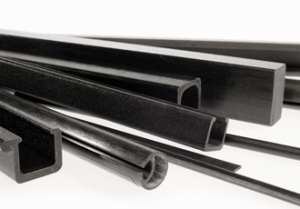Dispensing Adhesives with Hand Pumps Reduces Cost
Threaded fastener loosening is one of the major causes of industrial equipment failure and the resulting unscheduled downtime costs industry millions of dollars each year. Threaded fasteners set and hold tolerances on assemblies ranging from light duty equipment to heavy machinery. To increase the reliability of this equipment many threadlocking methods have been developed, yet none exhibit the level of performance of anaerobic threadlocking and thread sealing adhesives.
Threadlocking and thread sealing adhesives have become one of the most reliable and inexpensive ways to ensure that a threaded assembly will remain locked and leak proof. Applied drop-wise to fastener threads, these adhesives fill the grooves of the threads and cure to a hard thermoset plastic when fastener is assembled exposing the adhesive to metal ions in the absence of air – therefore they are also called anaerobic adhesives. Threadlockers are available in low strength formulations for easy removal, medium strength grades that can be removed using common hand tools, and high strength formulations that offer the highest holding abilities. Bolts that have previously been locked with a threadlocker can be re-used by removing the old adhesive.
Dispensing Metal Adhesives Manually
Typically anaerobic metal adhesives are made available in special purpose plastic bottles. The bottles are approximately half filled with adhesives. The unfilled space contains air that keeps the material stable and some suppliers, such as Loctite, actually developed special bottles that are slightly air-permeable, allowing air to pass through the bottle to further ensure product stability before usage.
Most users apply threadlockers directly out of their original packaging. With manual dispensing straight from the bottle, the volume of the adhesive dispensed is controlled by the operator. The bottle must be tipped so that a drop of threadlocker will be released from the bottle and placed by gravity onto the fastener.
Common challenges related to bottle dispensing include excessive dispensing of the adhesive where too much is applied, and applying the adhesive in tight locations where the bottle cannot be tipped for drop-wise application.
Hand Pumps Minimize Waste
A simple and effective solution is to use a low-cost hand pump unit that can be installed onto the bottle-top. Hand pumps are positive displacement dispensing systems, which by definition is the volumetric displacement of fluid. A positive displacement system is unaffected by external variables and is therefore very repeatable under changing conditions such as temperature and viscosity. The variables that affect positive displacement dispensing are stroke, bore, and or rotation. By pressing a trigger, the dispensing wheel is turned and an exact quantity of the product is transported
through the tube to the applicator needle. Most handpump designs include an adjusting screw to set the stroke on the trigger. With this it is possible to control the quantity of adhesive to be applied very accurately.
A leading adhesive manufacturer provides hand-pumps for use with its products. These manual systems will dispense threadlockers, thread sealants, and retaining compounds from 0.01 to 0.4 ml, and in viscosity’s up to 30,000 cPs. They work at any angle, won’t leak, and eliminate waste. In addition, they require no flushing, power, or air source. Loctite - has done comparison tests, and test show that correctly applying a hand-pump can effectively lower usage of liquid threadlocking adhesive by more than 40%.
Dispensing Metal Adhesives Manually
Typically anaerobic metal adhesives are made available in special purpose plastic bottles. The bottles are approximately half filled with adhesives. The unfilled space contains air that keeps the material stable and some suppliers, such as Loctite, actually developed special bottles that are slightly air-permeable, allowing air to pass through the bottle to further ensure product stability before usage.
Most users apply threadlockers directly out of their original packaging. With manual dispensing straight from the bottle, the volume of the adhesive dispensed is controlled by the operator. The bottle must be tipped so that a drop of threadlocker will be released from the bottle and placed by gravity onto the fastener.
Common challenges related to bottle dispensing include excessive dispensing of the adhesive where too much is applied, and applying the adhesive in tight locations where the bottle cannot be tipped for drop-wise application.
Hand Pumps Minimize Waste
A simple and effective solution is to use a low-cost hand pump unit that can be installed onto the bottle-top. Hand pumps are positive displacement dispensing systems, which by definition is the volumetric displacement of fluid. A positive displacement system is unaffected by external variables and is therefore very repeatable under changing conditions such as temperature and viscosity. The variables that affect positive displacement dispensing are stroke, bore, and or rotation. By pressing a trigger, the dispensing wheel is turned and an exact quantity of the product is transported
through the tube to the applicator needle. Most handpump designs include an adjusting screw to set the stroke on the trigger. With this it is possible to control the quantity of adhesive to be applied very accurately.
A leading adhesive manufacturer provides hand-pumps for use with its products. These manual systems will dispense threadlockers, thread sealants, and retaining compounds from 0.01 to 0.4 ml, and in viscosity’s up to 30,000 cPs. They work at any angle, won’t leak, and eliminate waste. In addition, they require no flushing, power, or air source. Loctite - has done comparison tests, and test show that correctly applying a hand-pump can effectively lower usage of liquid threadlocking adhesive by more than 40%.
Downloads
Similar articles
More from Henkel
- High performance retaining compounds 28th July 2017
- Structural bonders have a positive effect on static stress 5th June 2017
- What are the options for preventing loosening nuts and bolts? 30th May 2017
- Experts pocket guide with health and safety section 28th September 2016












Write a comment
No comments